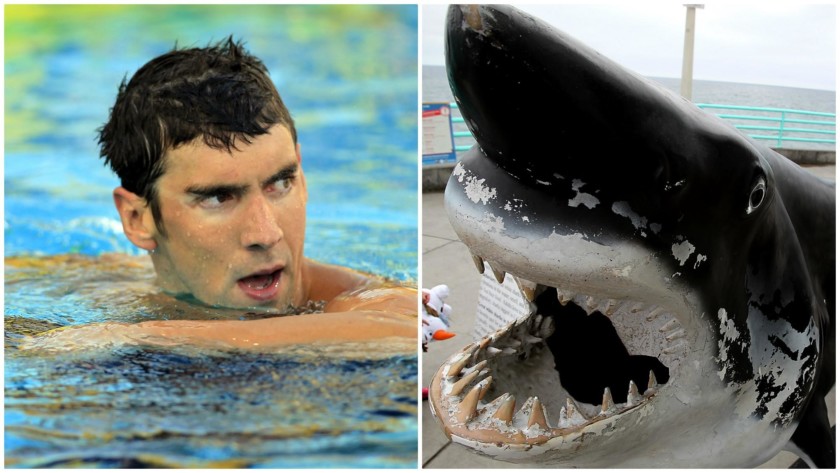Olympian swimmer Michael Phelps was set to race a great white shark as part of Discovery Channel’s Shark Week on Sunday. Phelps raced, and lost by two seconds.
But did it really matter? The shark was only a CGI simulation.
To avoid risking Phelps getting hurt or eaten in the water, Phelps raced against an average of the shark’s earlier times in the same race. Additionally, he got a little help from a wetsuit to reduce drag and a monofin as a stand-in for a shark’s tail. And yet Phelps still couldn’t beat the shark’s time. The Guardian reports:
Phelps’s best time over 100m in competition is 47.51sec. With the fin and wetsuit he managed to complete the course in 38.1 but the “shark” came in two seconds faster. “Honestly, the first thought that went through my head when I saw the shark, there’s probably very little chance for me to beat him,” said Phelps.
Although the it wasn’t a real shark in the water, watching Phelps swim is always a treat. Here’s the full video:
Title picture: The Los Angeles Times
The fact this video is a full on simulation is incredible, giving tribute to our ever-improving technology. According to Inforum:
Gutteridge [the mastermind behind the plan] and the team collected data about the swim speed of sharks, which is apparently very hard to do, because sharks don’t typically swim in a straight line.
So, Gutteridge said, instead of Phelps and a shark swimming side by side, the scientists would use the speed data they obtained to create a computer-generated image of a shark racing. And Phelps would compete against that.
Although we’re a little upset that Phelps didn’t actually swim against a great white shark, we do appreciate the amount of skill and forethought that went into making this clip.


